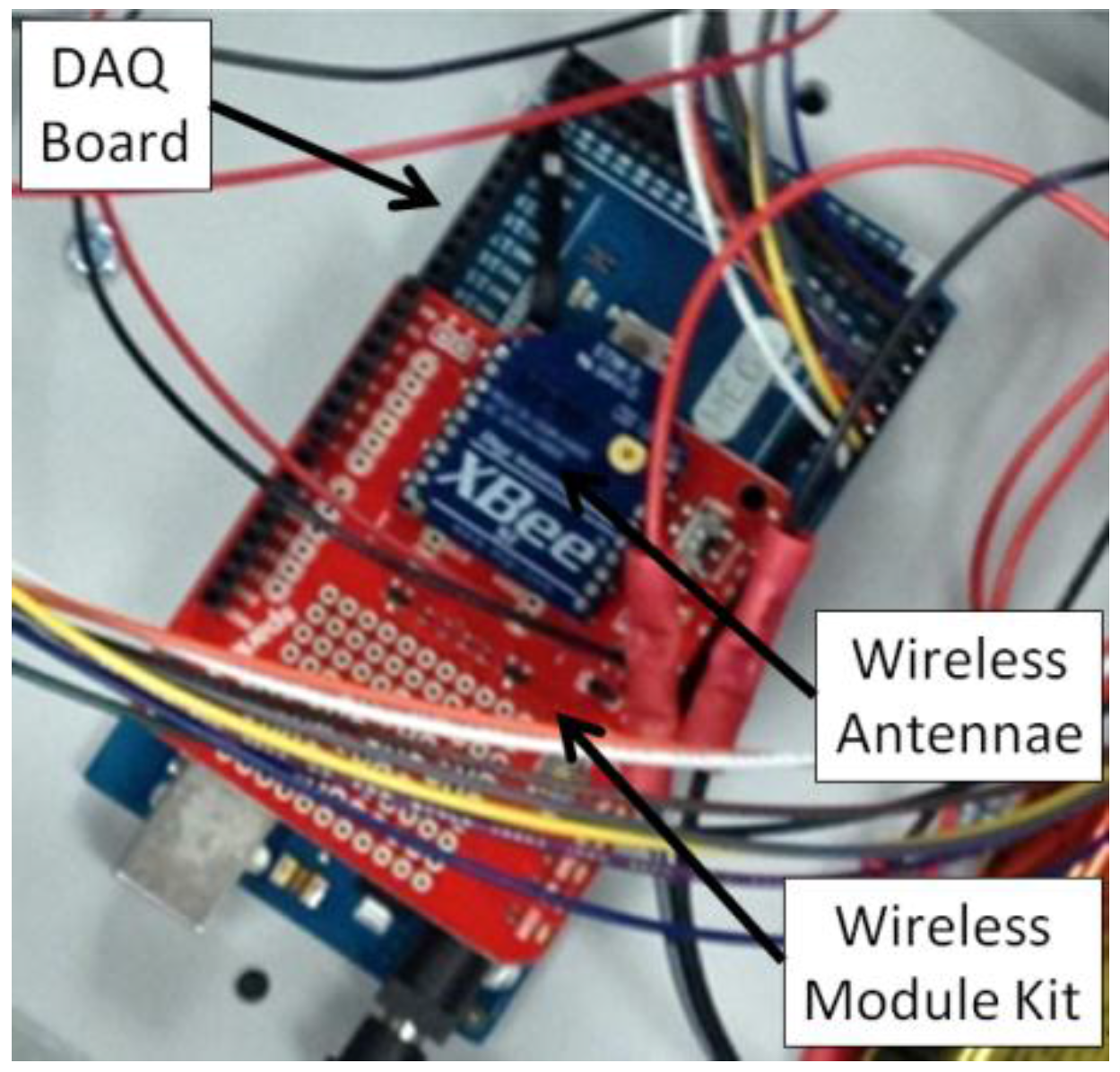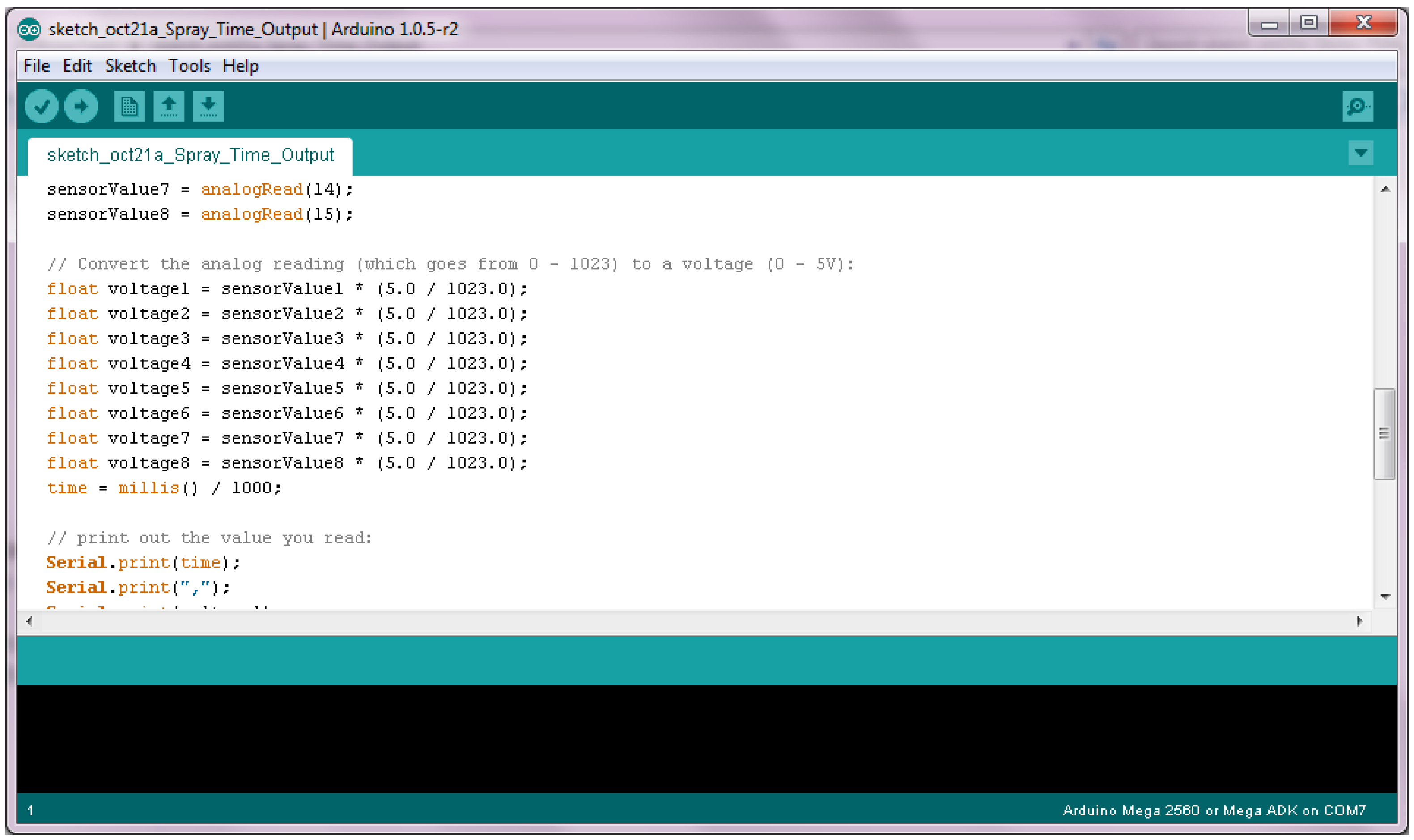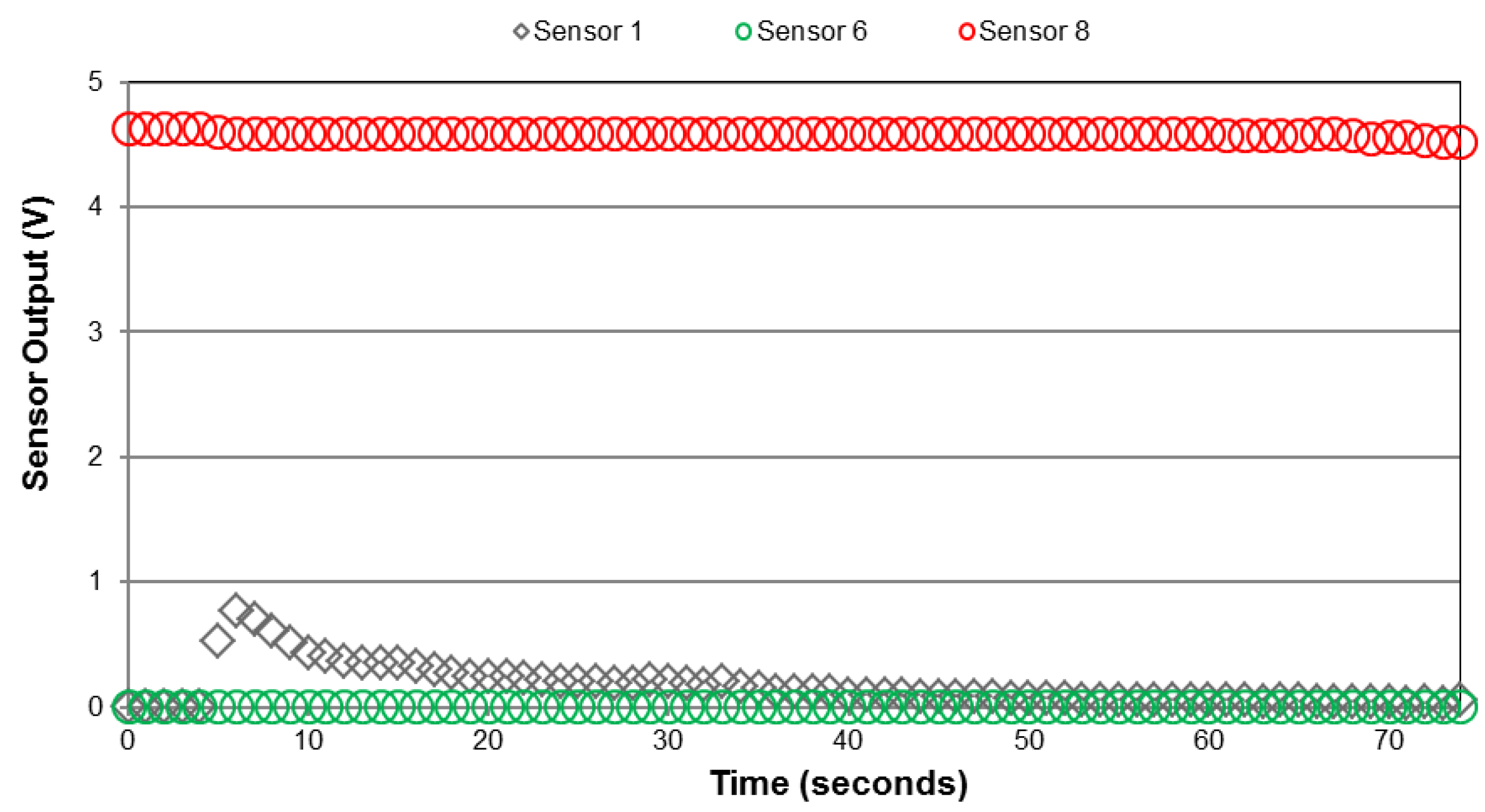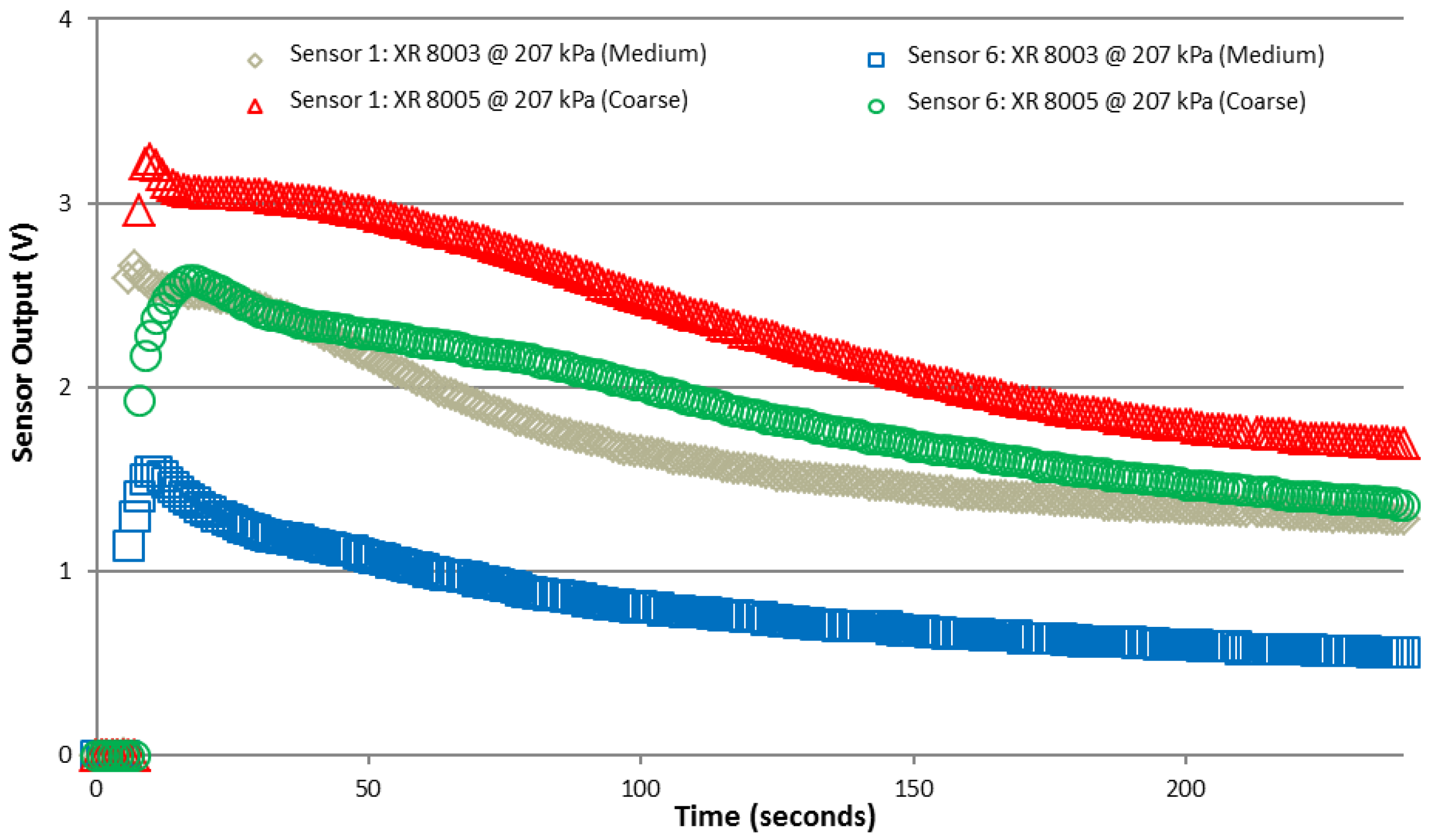Development and Preliminary Evaluation of a Spray Deposition Sensing System for Improving Pesticide Application
Abstract
:1. Introduction
2. Materials and Methods
2.1. Sensor Array and Data Acquisition Development

| Sensors | Trace Width (mm) | Spacing (mm) | Gap Width (mm) | Variable Resistor Setting (kΩ) |
|---|---|---|---|---|
| 1, 2, 3, 4 | 0.41 | 0.76 | 0.36 | 6.0 |
| 5, 6 | 0.41 | 1.52 | 1.12 | 11.0 |
| 7, 8 | 0.18 | 0.36 | 0.18 | 3.0 |


2.2. Test Procedures
2.2.1. Sensor Array Testing with Metered Droplets
2.2.2. Statistical Analysis
2.2.3. Sensor Array Testing with Spray Chamber
| Nozzle ID Number | Pressure (kPa) | Droplet Size Classification † | Speed (km·h−1) | Application Rate † (L·ha−1) |
|---|---|---|---|---|
| XR8001 | 207 | F | 4 | 96 |
| XR8003 | 207 | M | 10 | 96 |
| XR8005 | 207 | C | 10 | 193 |
3. Results and Discussion
3.1. Sensor Array Testing with Metered Droplets
3.2. Sensor Array Testing with Spray Chamber


4. Conclusions
Acknowledgments
Author Contributions
Conflicts of Interest
References
- Pergher, G.; Gubiani, R. The effect of spray application rate and airflow on foliar deposition in a hedgerow vineyard. J. Agric. Eng. Res. 1995, 61, 205–216. [Google Scholar] [CrossRef]
- Hoffmann, W.C.; Salyani, M. Spray deposition on citrus canopies under different meteorological conditions. Trans. ASAE 1996, 39, 17–22. [Google Scholar] [CrossRef]
- Barber, J.; Greer, M.; Hewitt, A. A field measurement device for the aerosols used in mosquito control. In Proceedings of the 2004 ASAE Annual International Meeting, Reno, NV, USA, 6 December 2004; pp. 4–10.
- Salyani, M.; Serdynski, J. Development of a sensor for spray deposition assessment. Trans. ASAE 1990, 33, 1464–1468. [Google Scholar] [CrossRef]
- Montross, M.; Duncan, G.; Gates, R. Development and Testing of A Low-Cost Condensation Detection System. Appl. Eng. Agric. 2006, 22, 603–608. [Google Scholar] [CrossRef]
- Crowe, T.; Downey, D.; Giles, D. Digital device and technique for sensing distribution of spray deposition. Trans. ASABE 2005, 48, 2085–2093. [Google Scholar] [CrossRef]
- Marchal, A.R.S.; Cunha, M. Image processing of artificial targets for automatic evaluation of spray quality. Trans. ASABE 2008, 51, 811–821. [Google Scholar] [CrossRef]
- Nansen, C.; Ferguson, J.C.; Moore, J.; Groves, L.; Emery, R.; Garel, N.; Hewitt, A. Optimizing pesticide spray coverage using a novel web and smartphone tool, SnapCard. Agron. Sustain. Dev. 2015, 35, 1075–1085. [Google Scholar] [CrossRef]
- TeeJet. Extended Range Flat Spray Tips. 2015. Available online: http://www.teejet.com/media/433190/010_cat51-m_lores.pdf (accessed on 16 September 2015).
© 2015 by the authors; licensee MDPI, Basel, Switzerland. This article is an open access article distributed under the terms and conditions of the Creative Commons by Attribution (CC-BY) license (http://creativecommons.org/licenses/by/4.0/).
Share and Cite
Kesterson, M.A.; Luck, J.D.; Sama, M.P. Development and Preliminary Evaluation of a Spray Deposition Sensing System for Improving Pesticide Application. Sensors 2015, 15, 31965-31972. https://doi.org/10.3390/s151229898
Kesterson MA, Luck JD, Sama MP. Development and Preliminary Evaluation of a Spray Deposition Sensing System for Improving Pesticide Application. Sensors. 2015; 15(12):31965-31972. https://doi.org/10.3390/s151229898
Chicago/Turabian StyleKesterson, Melissa A., Joe D. Luck, and Michael P. Sama. 2015. "Development and Preliminary Evaluation of a Spray Deposition Sensing System for Improving Pesticide Application" Sensors 15, no. 12: 31965-31972. https://doi.org/10.3390/s151229898
APA StyleKesterson, M. A., Luck, J. D., & Sama, M. P. (2015). Development and Preliminary Evaluation of a Spray Deposition Sensing System for Improving Pesticide Application. Sensors, 15(12), 31965-31972. https://doi.org/10.3390/s151229898






